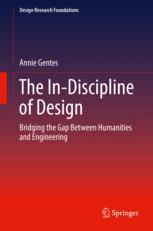

Most ebook files are in PDF format, so you can easily read them using various software such as Foxit Reader or directly on the Google Chrome browser.
Some ebook files are released by publishers in other formats such as .awz, .mobi, .epub, .fb2, etc. You may need to install specific software to read these formats on mobile/PC, such as Calibre.
Please read the tutorial at this link: https://ebookbell.com/faq
We offer FREE conversion to the popular formats you request; however, this may take some time. Therefore, right after payment, please email us, and we will try to provide the service as quickly as possible.
For some exceptional file formats or broken links (if any), please refrain from opening any disputes. Instead, email us first, and we will try to assist within a maximum of 6 hours.
EbookBell Team

4.7
76 reviewsDesign is a conceptive activity which is usually presented as a sensible, sequential process and action. This book claims that design cannot be reduced to the rational, effective planning and organization that most models (such as design thinking) present. The author suggests another type of rationality which is based on what the humanities call aesthetics, writing, composition, and style: a rationality based in imaginary elaboration and coherence. The chapters, therefore, demonstrate that design practice is about creating not only functional tools, but planes of reflections that challenge norms.
To support this claim, this book analyzes research programs, art works, and design projects that produced new information and communication technologies (ICT). This is detailed using examples in each chapter. From these examples, two types of conclusions are derived: a first level considers the lessons that we can draw from these examples in terms of design practice while the second level starts a theoretical discussion based on these analyses of use cases.The goal is to develop an understanding of conception in its different forms. This book brings the use of these neglected methods to the foreground as a way to explicate the design process. Taking into consideration the humanities within design contributes to the discussion on pluridisciplinarity. The book posits that design as a historical and situated activity is a truly multidisciplinary endeavor that bridges the gap between engineering sciences and the humanities.